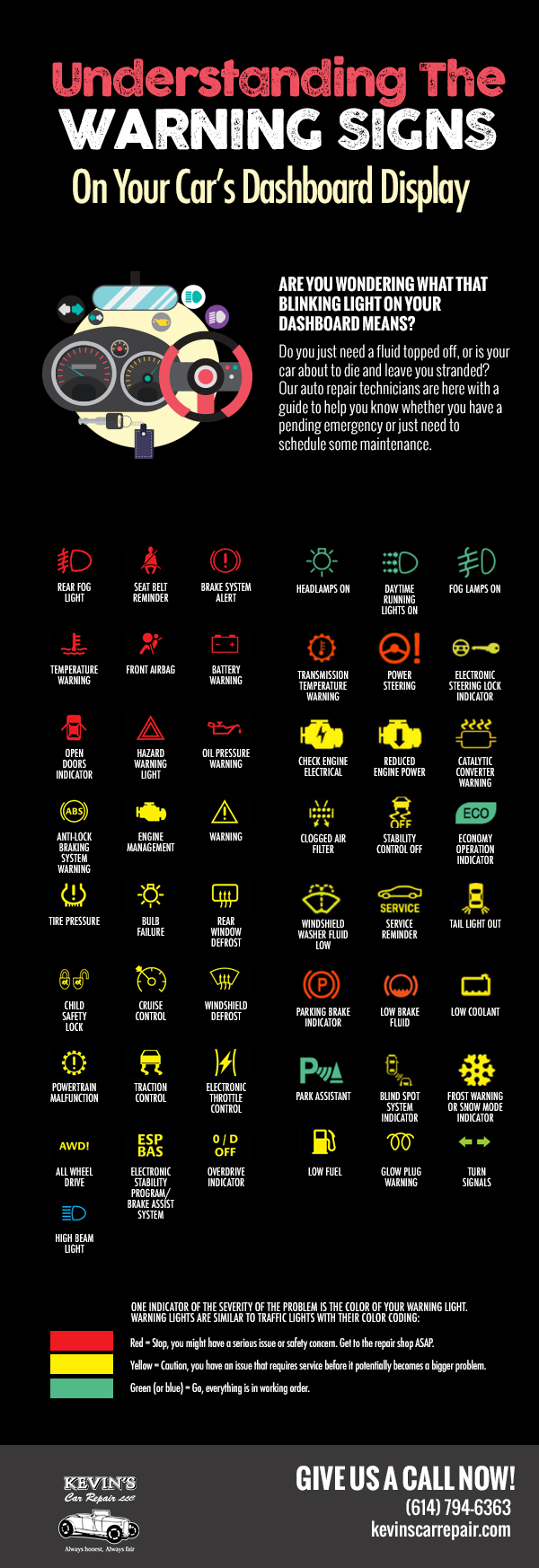Comprehending The Meaning Behind Your Vehicle'S Warning Lighting: An In-Depth Look
Comprehending The Meaning Behind Your Vehicle'S Warning Lighting: An In-Depth Look
Blog Article
Short Article Writer-Sykes Stark
When you're behind the wheel, those radiant warning lights on your dashboard can be a little bit perplexing. Do you understand what they're attempting to tell you regarding your auto's health? Comprehending the relevance of these lights is crucial for your safety and security and the durability of your vehicle. So, the following time among those lights appears, wouldn't you want to decode its message precisely and take the needed actions to address it?
Common Caution Lighting and Interpretations
Determine usual warning lights in your cars and truck and understand their definitions to make certain safe driving.
One of the most regular caution lights consist of the check engine light, which indicates problems with the engine or exhausts system. If this light comes on, it's important to have your automobile checked promptly.
The oil stress cautioning light suggests low oil pressure, needing immediate attention to avoid engine damages.
A blinking battery light may recommend a faulty billing system, possibly leaving you stranded if not dealt with.
The tire pressure tracking system (TPMS) light notifies you to reduced tire stress, impacting vehicle security and gas effectiveness. Neglecting this might lead to hazardous driving conditions.
The abdominal muscle light indicates a trouble with the anti-lock stopping system, compromising your capability to stop quickly in emergencies.
Lastly, the coolant temperature alerting light warns of engine getting too hot, which can lead to extreme damages if not fixed swiftly.
Recognizing these typical caution lights will certainly assist you resolve concerns promptly and preserve risk-free driving conditions.
Importance of Prompt Attention
Understanding the common caution lights in your auto is only the very first step; the relevance of promptly resolving these cautions can not be stressed sufficient to guarantee your safety and security on the road.
When a caution light illuminates on your control panel, it's your vehicle's means of connecting a potential problem that needs focus. Overlooking these cautions can cause a lot more severe troubles down the road, jeopardizing your security and potentially costing you a lot more out of commission.
Prompt interest to cautioning lights can avoid breakdowns and mishaps. For instance, a flashing check engine light might indicate a misfire that, if left unattended, could create damages to the catalytic converter. Addressing this immediately can save you from a pricey repair service.
Similarly, a brake system advising light may indicate low brake fluid or worn brake pads, vital elements for your safety and security when driving.
Do It Yourself Troubleshooting Tips
If you observe a caution light on your dashboard, there are a couple of DIY repairing pointers you can try prior to seeking specialist assistance.
The very first step is to consult your cars and truck's handbook to recognize what the particular caution light suggests. In some cases the concern can be as basic as a loose gas cap causing the check engine light. Tightening up the gas cap might settle the issue.
One more common concern is a reduced battery, which can set off various cautioning lights. Checking great site for corrosion and guaranteeing they're safe might fix the problem.
If a warning light persists, you can attempt resetting it by separating the car's battery for a few minutes and afterwards reconnecting it. In addition, inspecting your automobile's liquid degrees, such as oil, coolant, and brake fluid, can assist repair warning lights related to these systems.
Verdict
To conclude, understanding your auto's warning lights is necessary for keeping your vehicle running efficiently and securely. By without https://carbrakes62849.dsiblogger.com/64118076/the-five-major-misconceptions-of-car-outlining-clarified-and-eliminated addressing these informs and understanding what they mean, you can prevent costly repair services and prospective malfunctions.
Remember to consult your automobile's manual for certain details on each advising light and take action as necessary to ensure a hassle-free driving experience.
Stay informed, remain safe on the road!
